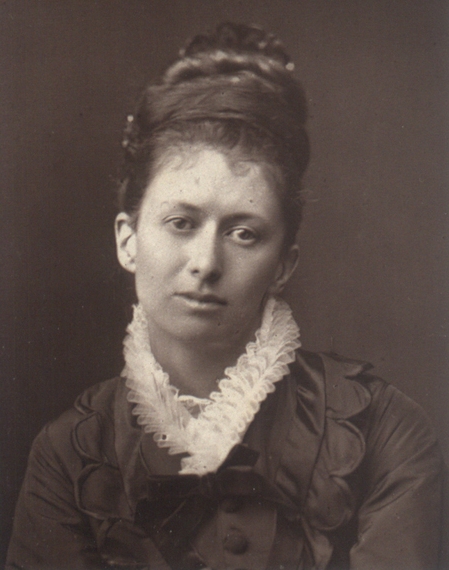Lady Elizabeth Southerden Thompson Butler (Lady Butler)

Artist. Encouraged by her parents to sketch and paint from an early age, she began studying art about 1862, and in 1866 entered the Female School of Art in London. As a young woman, she and her younger sister, poet and essayist Alice Meynell, and their parents spent much time in Italy, and there the family converted to Catholicism. Her art originally concentrated on religious themes, and a notable example is “The Magnificat” (1872), but it was her poignant depiction of important British battles in the nineteenth-century that brought her public and critical fame and sealed her reputation among the preeminent Victorian painters of historic events. She continued to paint images of war in both its heroism and suffering, however, through World War One. Her reputation first began to spread upon the appearance of her painting “The Roll Call” at the Royal Academy in 1874, which was purchased by Queen Victoria. Further important paintings include “The 28th Regiment at Quatre Bras” (1875) which took place three days before the Battle of Waterloo in 1815, “Scotland Forever” (1881), which depicts the charge of the Scots Greys at the Battle of Waterloo, and “Balaclava” (1876) which depicts the remnants of the Light Brigade after its infamous charge in 1854 during the Crimeam War. Her work often stirred great patriotism. In 1877, she married the soldier, explorer, and author Major William Francis Butler who became a general and was knighted. As the wife of a senior British Army officer, she was in a unique position to travel widely and sketch during her husband’s many postings and overseas campaigns. In 1880, she was commissioned by Queen Vicoria to paint “The Defence of Rorke’s Drift” which took place during the Zulu War of 1879. Beginning in 1892, she exhibited paintings at the Royal Hibernian Academy in Dublin. In her autobiography (1922), she wrote: “I never painted for the glory of war, but to portray its pathos and heroism.” She and her husband had a keen interest in the welfare of the poor and culturally marginalized, and while living in her husband’s native Ireland she portrayed the suffering of the poor in her painting “Evicted” (1890). She illustrated the first collection of poetry by her sister Alice Meynell, titled “Preludes” (1875). Commissioned to provide illustrations for “Ballads” (1879), part of a posthumomus collection of works by William Makepeace Thackeray. Her paintings and sketches are found in the Royal Collection, universites, museums, and in private collections. In addition to her autobiography, Lady Butler published “Letters from the Holy Land” (1903) and “From Sketch-Book and Diary” (1909). Over fifty years after her death, still widely recognized by historians and collectors, the National Army Museum held a major exhibition of her paintings and sketches. (bio by: wildgoose) Family links: Spouse: William Francis Butler (1838 – 1910)
Born
- November, 03, 1846
- Switzerland
Died
- October, 10, 1933
- Ireland
Cemetery
- Stamullen Cemetery
- Ireland

